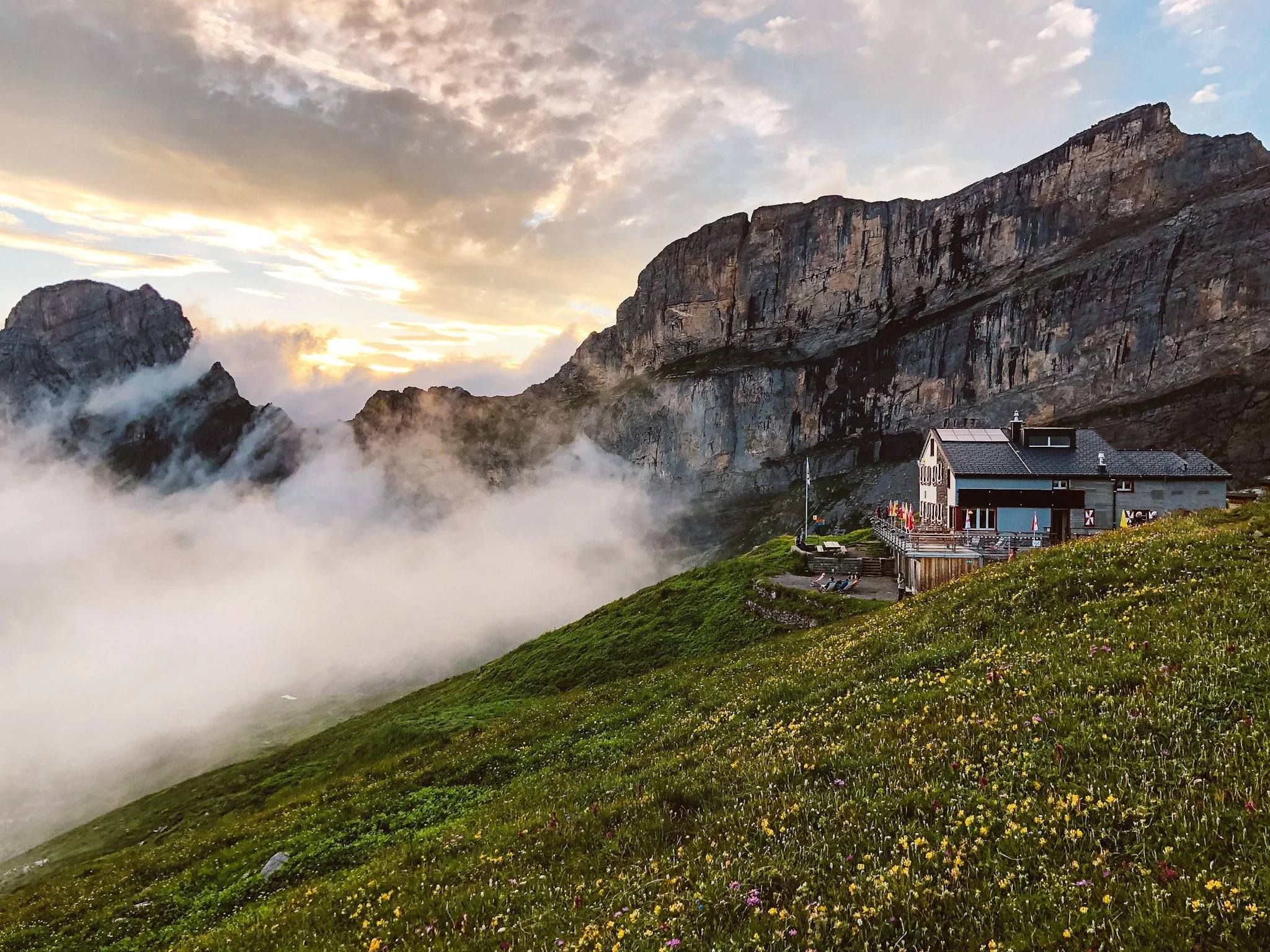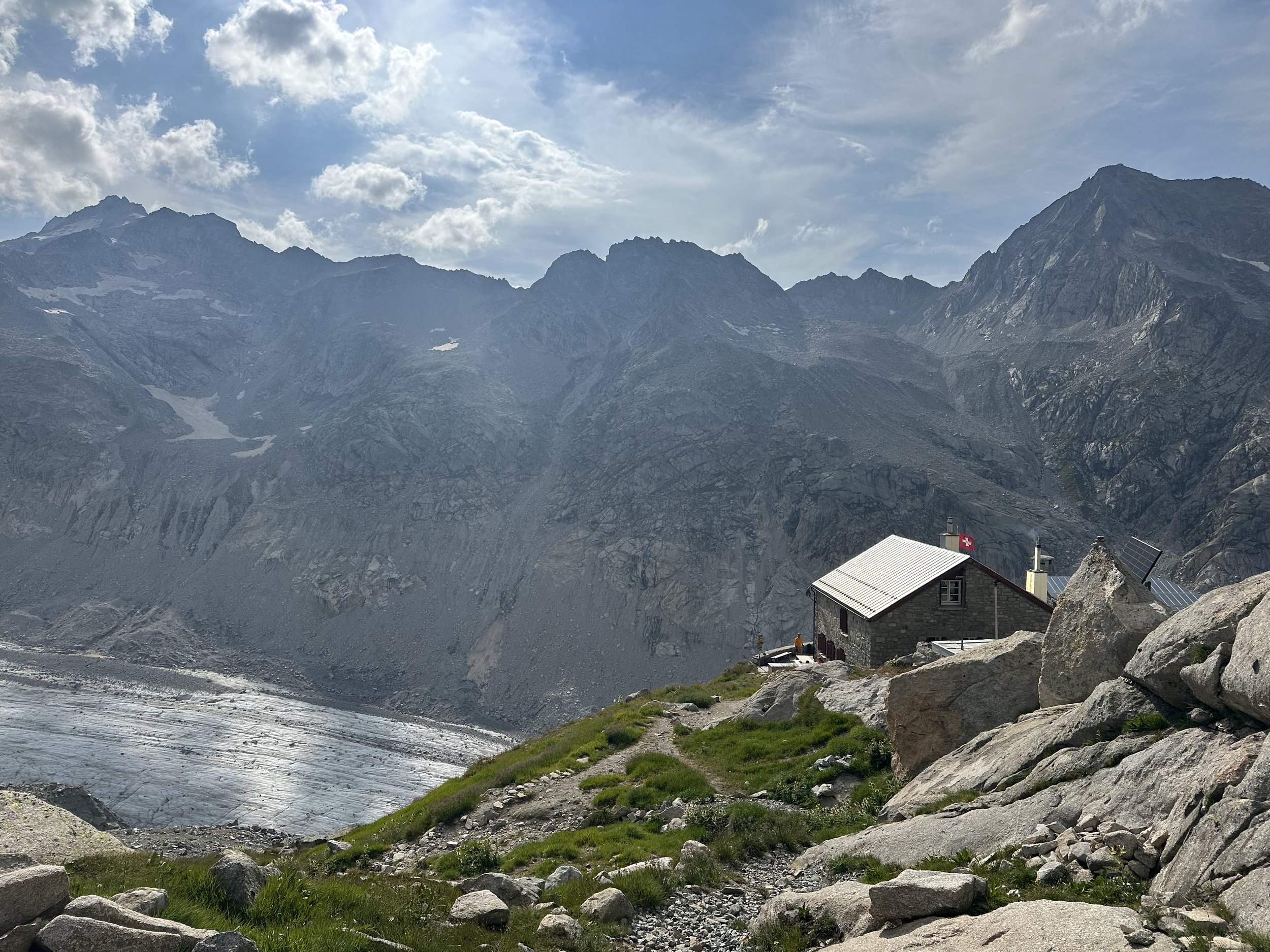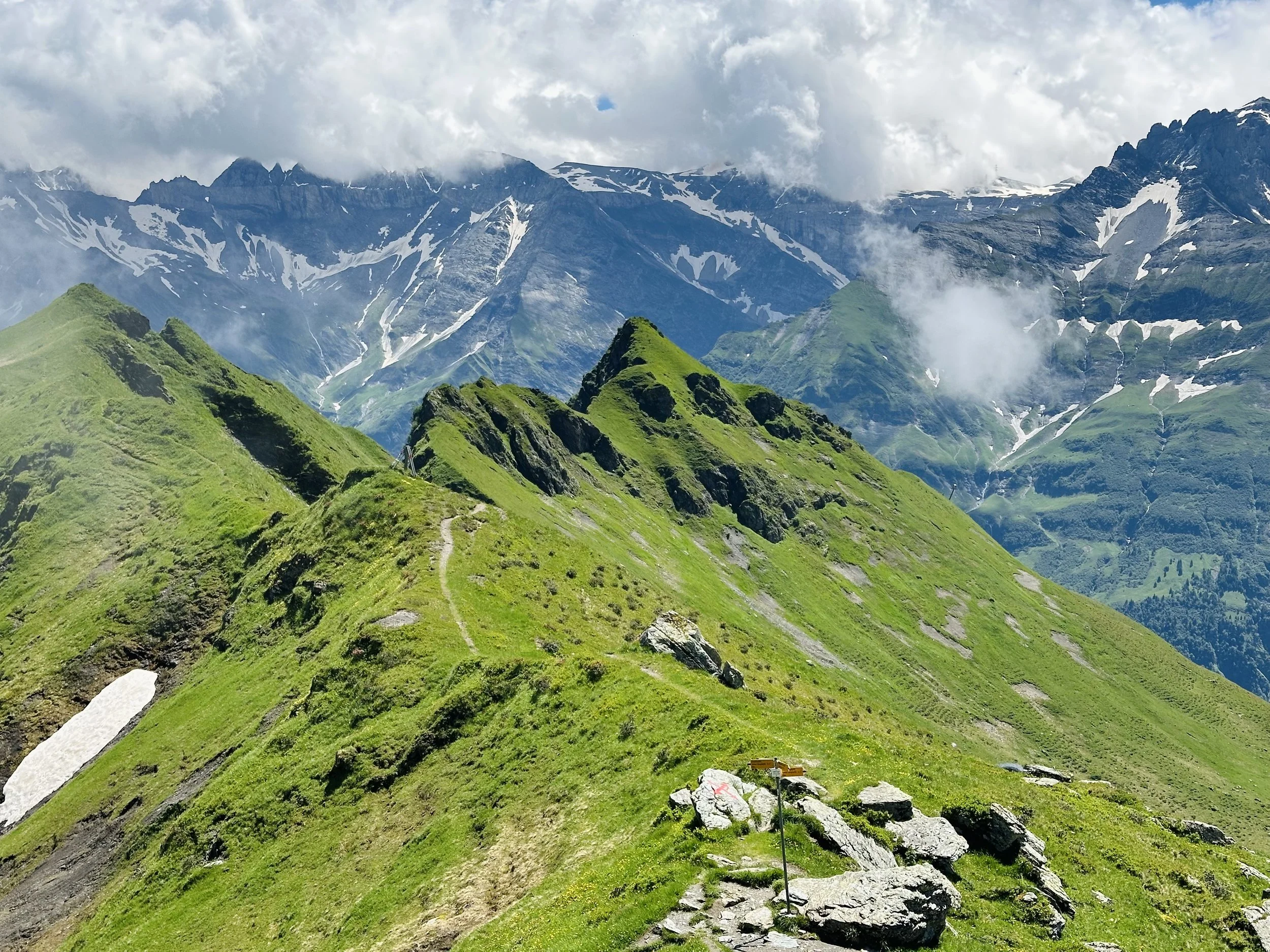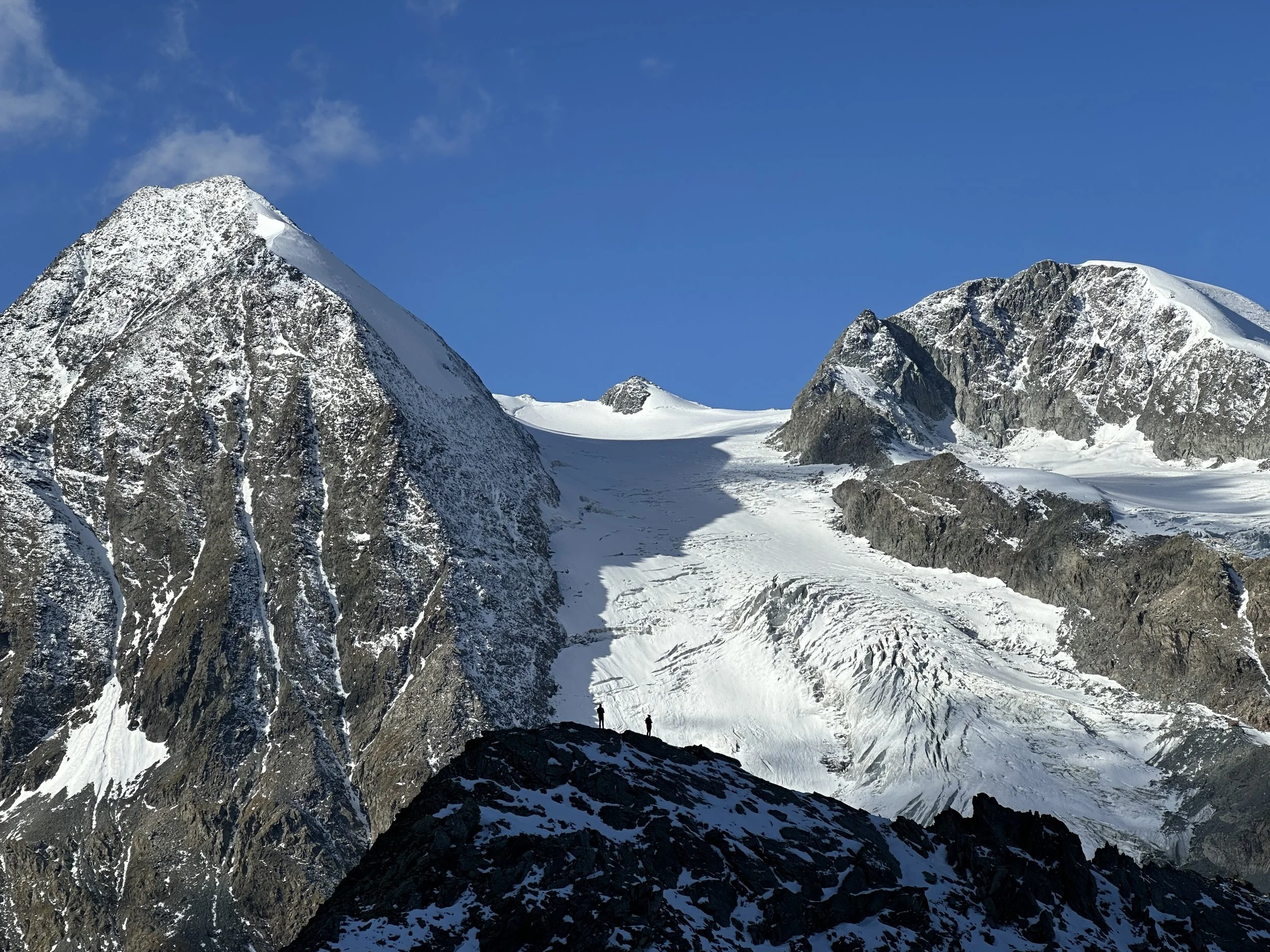Hut Life: Hut Hiking in Switzerland
The Swiss mountain hut system is one of my very favorite things about this country, and I think a hut overnight something everyone should do at least once.
But, I also know that the whole process can feel intimidating if it’s your first time. So here’s a primer, with everything I know about staying at a Swiss mountain hut.
P.S. If this is your first time doing any type of hiking in Switzerland, start here. And if you would like help in planning your next hike, check out this page.
About Swiss huts
Swiss huts are essentially alpine hostels for hikers and mountaineers, and yes, it’s just as amazing as it sounds (for anyone who likes hiking or mountaineering, at the very least!). For a relatively reasonable price, at a mountain hut you get a dorm bed, dinner, breakfast, and best of all - sunsets and sunrises over the Alps. Or ok, maybe the best part is that you get all the benefits of staying in the mountains without having to lug any of the heavy camping gear.
There are literally huts throughout the entirety of the Swiss Alps, some easy to reach and some in unimaginably remote spots. It’s a truly incredible system, and a really special way to experience the mountains.
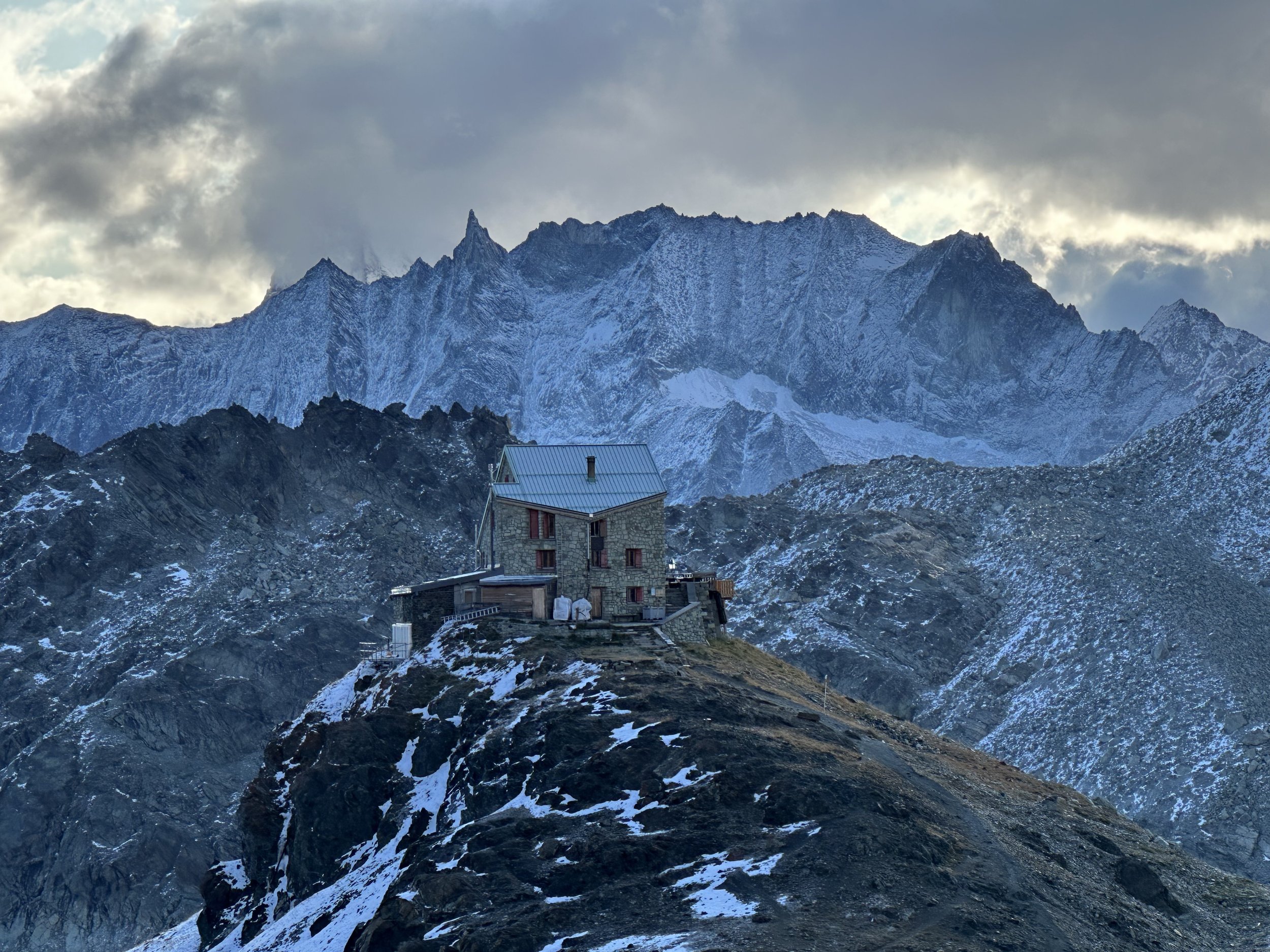
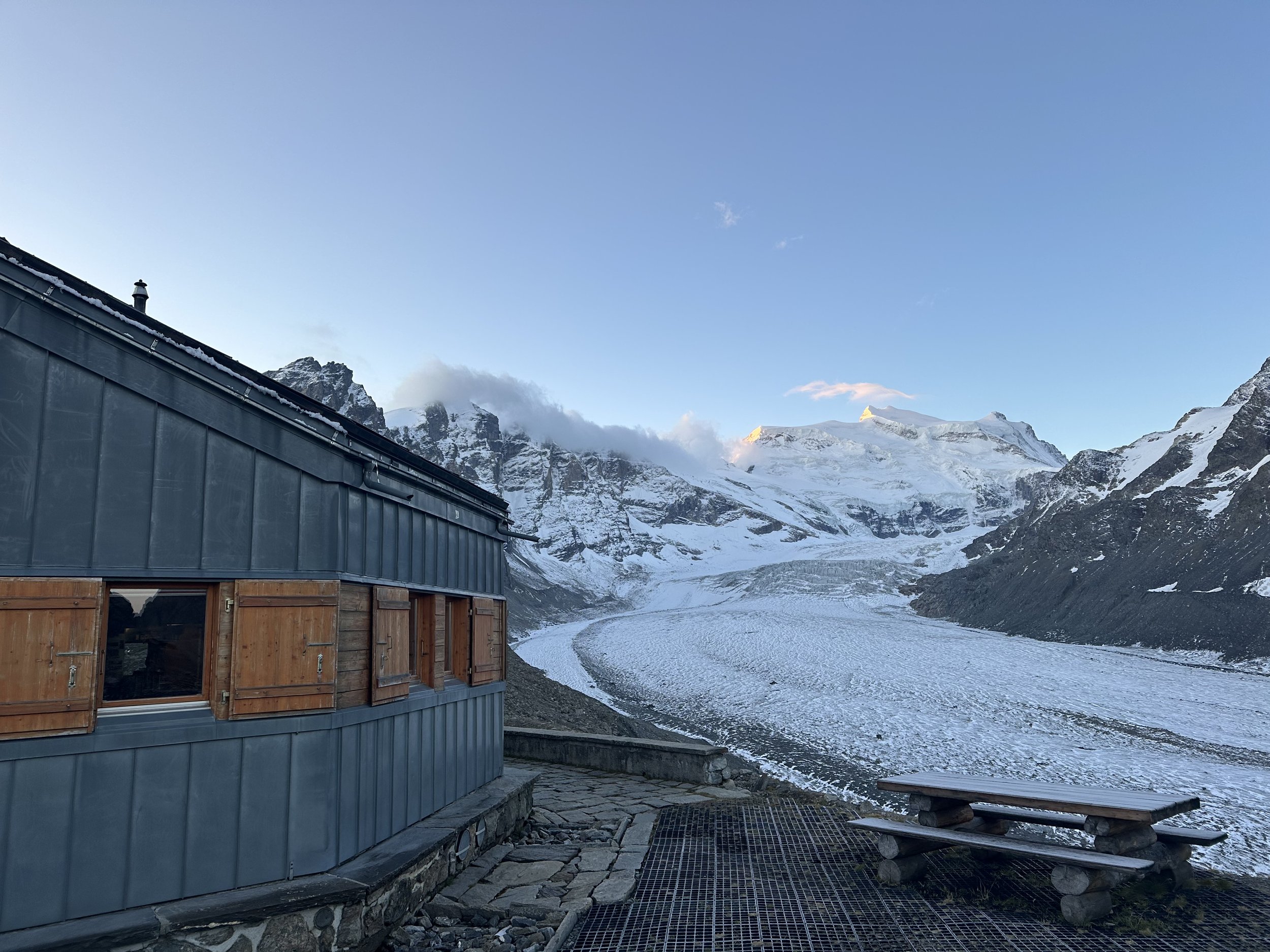
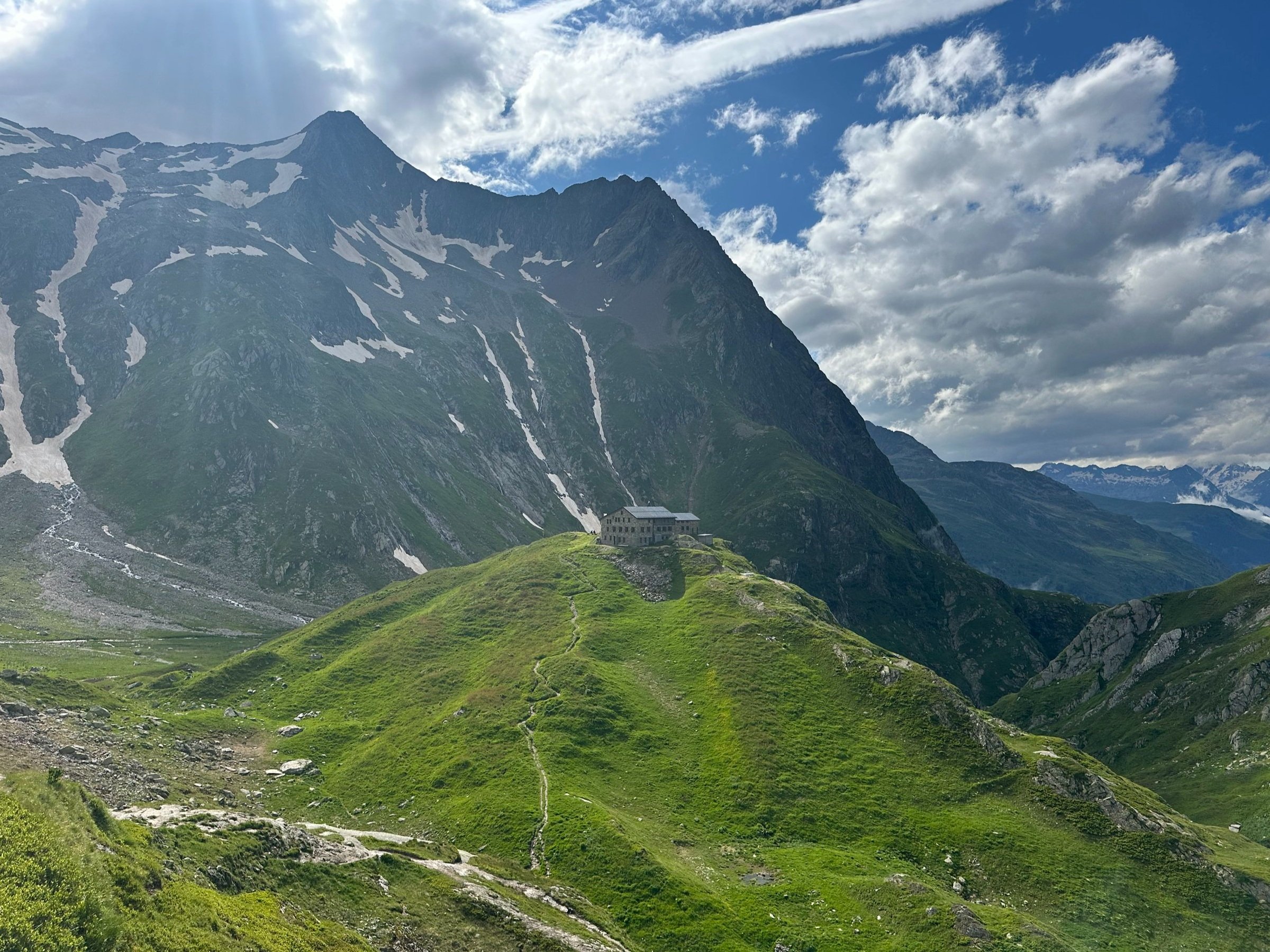
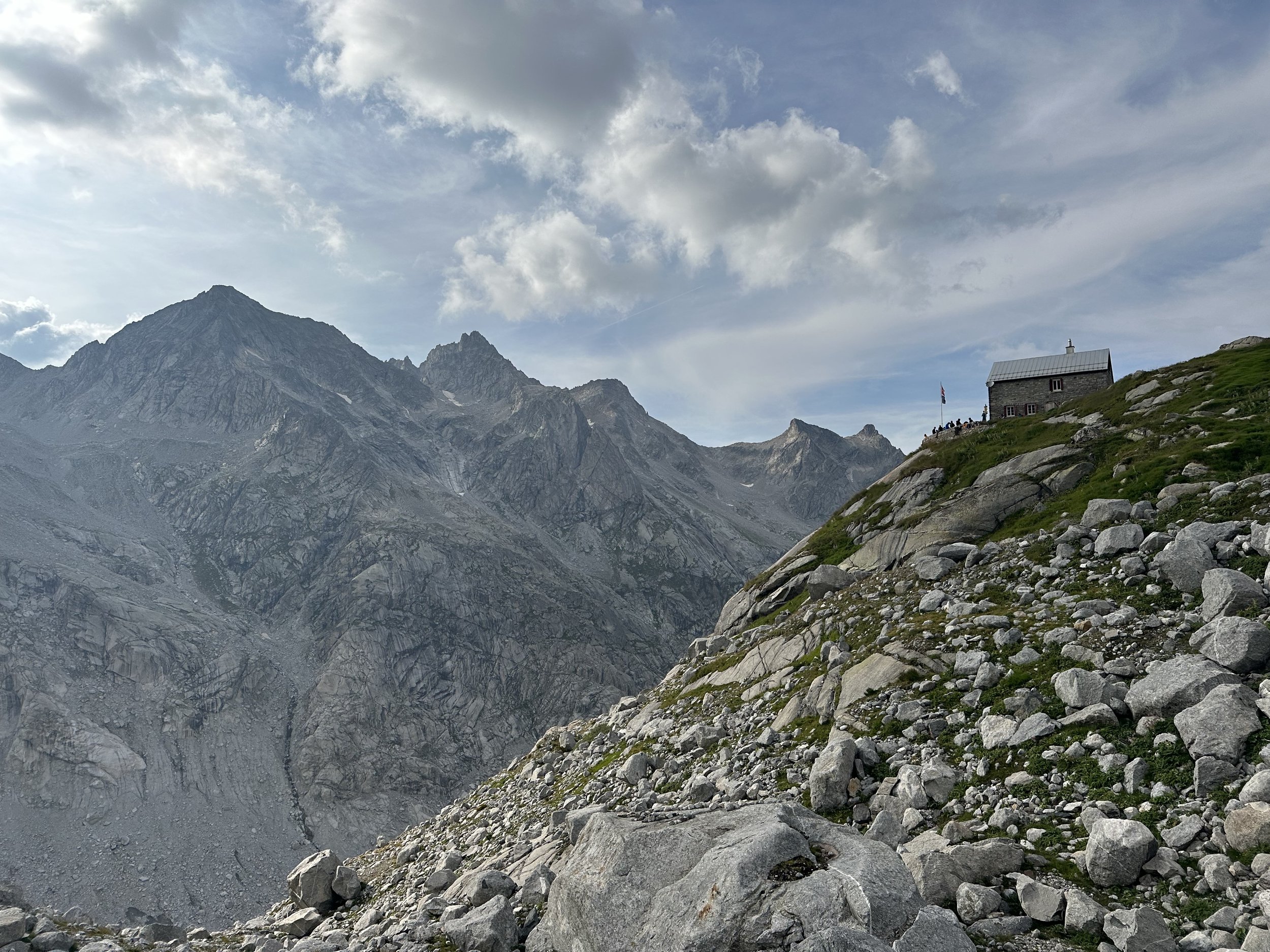
The Swiss Alpine Club (SAC) manages most of the huts, although there are privately owned huts as well. You can find information about each SAC hut and various approach routes on their website. Reservations are necessary, and you’ll need to book months in advance for Saturday night stays during peak season. Lots of huts also have their own websites, which are useful to check out before you go. In general, it costs between 70-90 CHF per night to stay, which includes half-board (dinner and breakfast) and a dorm bed.
About the experience
Swiss huts are very social and communal. I find that everyone is cheery and in good-spirits, with that slight touch of red-cheeked delirium you get from spending a long active day outside.
Once you arrive, you leave your hiking boots in the mud room, and slip into some house shoes (usually Crocs!). From late afternoon onward, people begin to congregate in the common areas, or the terrace if it’s warm. Drinks like beer, wine, tea and coffee are available for purchase. Dinner is at a set time, and is generally served family-style. You’ll get a hearty three-course meal, designed to refuel you after a long day in the mountains: a starter (soup or salad), a main (they can accommodate different dietary restrictions if requested in advance), and a dessert. If there are leftovers, the staff will come around and offer seconds. I’ve never gone hungry. Sure, some hut food is better than others, but I’ve found that I’m so ravenous after a day of hiking that everything tastes good. And it really feels luxurious to have a warm, home-cooked meal!
After dinner, people normally hang out in the common area to chat or play card games. Sometimes you get extra-lucky with an extraordinary sunset or a herd of visiting ibex, and on a clear night, once it gets dark you can see the Milky Way. It’s lights out by 10pm, but if I’m being honest, I’m normally reading in bed way before then.
For sleeping, the hut provides blankets and pillows, and you bring your own sleeping bag liner that serves as a sheet. Dorm styles can vary a lot. The classic dormitories are essentially one large mattress, with pillows at the head and folded blankets at the foot of each marked sleeping spot, capable of sleeping 6, 8, 12, or even more people. Others are bunk-style, or have partitions in between each space. But no matter the set-up, prepare to get quite cozy with your neighbors. I never get the best sleep, but it’s all part of the experience!
Bathrooms will also vary, but all huts will at least have clean, simple shared facilities: toilets and sinks with cold running water. I’ve never showered at a hut, even if they provide one (for a fee).
Breakfast is early, around 7:00 or 7:30am, and is very simple: bread, cheese, jam, muesli, coffee, tea. One hut served eggs, and I was so excited! But that’s definitely the exception, not the rule. And then everyone is packed and back out on the trail by about 9am.
P.S. All of the above refers to serviced or guarded huts, meaning they have a warden and staff on site. There are also “un-guarded” huts, which are self-service.
Packing List
Here’s what I pack. It’s everything I would normally bring for a day mountain hike, and:
Cash
Sleep sack/sleeping bag liner
Pajamas
Fresh underwear, socks, shirt, and sports bra for the next day
Basic toiletries (including body wipes so I can give myself a faux shower)
Small camping/microfiber towel (not necessary, but I like to have one)
Ear plugs and eye mask
Headlamp
External battery
Kindle
Extra water bottle if you want “marching tea”(kind of like a warm punch)
Hut Roundup
Now comes the hardest part - narrowing down what hut to go to!
To find a hut, the easiest way is to use the “Hut Finder” section of the SAC website to find a hut in your desired area, and use information from SAC + the hut website to plan your approach and descent. I’d also suggest mapping your route in the SwissTopo app as well.
Here is a sampling of the huts I’ve stayed in over the years - the ones I’ve like the most are starred. My favorite type of hut hikes go via a mountain pass, where you start in one valley, stay in a hut near the top of the pass, and then hike down the other side.
Capanna Cristallina* - Ticino
Capanna Christiallina, a hut high in the Ticino Alps, links stage 2 and stage 3 of the Sentiero Cristallina. The first day leads from up from the Val Bavona valley to the Robiei reservoir (you can take the gondola to skip this ascent if you’d like), then further up to the Passeo di Cristallina, passing alpine lakes and - if you are lucky - herds of ibex or chamois! The descent feels completely different. The route leads down the stony mountain slopes into larches and meadows.
The hut itself is spacious and very modern, with a huge sun terrace overlooking Lago Sfundau and glaciers. The food was served single-plated, instead of the usual family style (although that might have been a COVID precaution), but it was hearty and delicious. And, in true Italian form, you can get local wine and Aperol Spritz’s from the bar, too!
Terrihütte* - Graubunden
The Greina Plateau hike, straddling the cantons of Graubünden and Ticino, offers stunning high-altitude landscapes and a diverse trail experience. Spanning two days, hikers start in Vrin and ascend to the Terrihutte, a beautifully situated mountain hut perfect for an overnight stay. The second day showcases the expansive Greina Plateau, featuring glacial rivers and dramatic scenery before descending through breathtaking waterfalls into Val Camadra. This hike is ideal for those looking for an unforgettable adventure with both challenging terrain and rewarding views.
For more details, check out the full post here.
Rugghubelhütte - Obwalden
Rugghubelhütte is a great all-around hut: It’s big, family-friendly, and is perfectly situated among the mountains above the Engelberg Valley. There’s a huge, wrap-around sun terrace that’s perfect for late-afternoon post-hike beers, along with lounge chairs, and it’s located on a bit plateau so there’s lots of space walk around. It’s a good choice for families or first-timers, as there is an easy (1.5hr) approach from the Ristis mountain station. But, there are harder access options, too. Our approach route was a 6 hour trek from St.Jakob via the Rotgrätli, and it was stunning the whole way.
Capanna Alzasca* - Ticino
This is one of the sweetest huts I’ve stayed, and proof that great things come in tiny packages. Capanna Alzasca is a small Ticinese stone hut that only sleeps 20 people. The kitchen and dining room are in the same space, so you can watch (and smell!) dinner being prepared. We had hiked the entire day in the cold and rain, and Alzasca was just so cozy and warm and inviting. This hut also had INCREDIBLE food, including a meat-and-cheese apero they served before the meal. The sleeping quarters are basic - just mattress on the floor - but comfortable.
It’s an experience you’ll work for. Alzasca is located high above the Maggia valley, and every approach is at least 1200m (or more) of steep ascent. That’s Ticino for you. But trust me, when you see those blue-and-white shutters, it will all be worth it.
Capanna del Forno*: Graubünden
The Capanna del Forno hike offers an incredible adventure along two contrasting trails: a scenic high path with stunning views of the Forno Glacier and a valley trail that descends into lush landscapes. Starting from Maloja, hikers ascend 11 km to the hut, navigating boulder fields and taking in breathtaking mountain vistas. The second day involves a 14 km descent through Val Forno, revealing a different perspective of the area’s beauty. The route includes a delightful lunch stop at Lägh da Cavloc, making it a memorable weekend getaway.
For more details, visit the full post here.
Salbihütte - Uri
Salbithütte isn't just a mountain hut, it's a basecamp for epic climbing adventures. Located in a prime area known for challenging routes around the spiky granite peaks of the Salbitschijen massif, this hut definitely caters to the climbing crowd. As an aspiring outdoor climber myself, it was very fun to hear everyone’s stories of the day and the ascent plans for the morning.
The one negative thing I’ll stay about this hut is that it does feel a bit crowded when at capacity. It sleeps 58 people, and on a busy Saturday night, that felt like too many people, especially with only 2 toilets for everyone. As for the hike itself, we approached from Wassen via the Rohr and Bandelucke (this was a top hike of the season, highly recommend!), and then descended the next day to Göschenen (RIP knees, so steep!).
Chamanna da Grialetsch - Graubünden
The area between Davos and Unter Engadin has spectacularly dramatic Alpine scenery. I love this part of Switzerland, and Chammana Grialetsch is nestled right in the heart of it. It part of the popular three-day Kesch-Trek, a route that connects the Flüela Pass with the Albula Pass. The hut itself seemed recently refurbished.
Approach / Descent
Sardonahütte - Glarus
Sardonahütte is a very “locals” hut. It’s mainly frequented by other Swiss hikers and doesn’t get many tourists. The hut wardens are so nice, and some of the staff’s children run around and “help” out. It’s super cute, and makes the entire stay feel very homey. At night, herds of ibex are known to come down from the mountain and graze near the hut, too!
The hike is one of the best in the area, too. The approach goes via the incredible Batoni waterfall arena (with three huge waterfalls), and the descent ends at the fjord-like Gigerwaldsee.
Carschinahütte - Graubünden
The Carschinahütte is in the Rätikon mountain range, at the base of the Sulzfluh, with surrounding meadows full of wildflowers and marmots. It’s a common stop on the multi-stage Prättigauer Höhenweg, but it’s also great hut for families, first-timers, and groups. The young staff is so friendly, and the food is delicious (we had lasagna for dinner, and EGGS!!! for breakfast).
There’s an easy direct route from St. Antönien Platz that goes over Alp Carshina, but I’d recommend the variant that passes by the turquoise Partnunsee.
Multi-Day Hut Hikes
There’s no single resource to planning a hut-to-hut hike, so be prepared to invest some time researching. It is worth it, I promise! If you are uncomfortable mapping out your own trail, look into different stages of official long distance trails.

